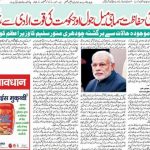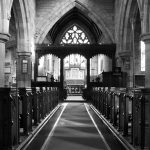All You Need to Know About Puri Jagannath ‘Rath Yatra’
The Jagannath Temple in Odisha’s Puri is all set to host its 141st Rath yatra from today 14th July. For all the worshipers of Lord Jagannath, the annual Jagannath Rath Yatra is just one day away but in reality it is a 11-day festival in the month of Ashada in Indian Calander. Rath Yatra is celebrated on dwitiya tithi during Shukla Paksha of Ashada month.
The day of Rath Yatra is considered the most auspicious among the Indians. However, the unique aspect of the Rath Yatra is that instead of devotees going to seek blessings from the deity, the gods themselves come out of their sanctum to mingle with all. The deities in question are the holy trinity comprising elder brother Lord Balabhadra, sister Subhadra and Lord Jagannath, a rare case of siblings being worshipped together. When Lord Jagannath, revered as Patitapaban (saviour of the downtrodden), in a rare gesture of divinity comes out from the shrine to shower blessings on his devotees, the divine sight of him and his fellow deities redeems one from all sins.
Rath Yatra is said to be the largest religious congregation after the Kumbh Mela, the Rath Yatra in Puri spreads over 11 days (from the Rath Yatra day to Niladri Vijaya when the deities are carried back into the temple). The largest draw of devotees is seen on the days the chariots are pulled: the actual Rath Yatra day and the Bahuda Yatra or ‘return car festival’. This is the only occasion when everybody has access to the deities.
Jagannath Rath Yatra
The name ‘Jagannath’ is derived from two Sanskrit words – ‘Jagan’ meaning ‘Universe’ and ‘Nath’ meaning ‘Lord’. Jagannath is considered to be a form of Lord Vishnu. The temple is one of the four Hindu pilgrimage centres known as ‘Char Dham’ – a Hindu is expected to make once in a lifetime. The festival marks the journey of Lord Jagannath, his brother Lord Balabhadra and sister Goddess Subhadra from the Puri Jagannath Temple to the Gudicha Temple..
With just a few hours left for the Rath Yatra, lakhs of devotees reached Jagannath Mandir or Srimandir today, as the holy trinity of Gods gave their first glimpses after the 15 days healing ritual at the Puri Srimandir.
Rath Yatra is celebrated with great fervour in Odisha. The atmosphere is electric on the ‘Bada Danda’ or the Grand Road in Puru where lakhs of devotees throng just to get a glimpse of Lord Jagannath and touch the chariots once. In fact, not only Odisha, massive chariot procession are held in other cities like Ahmedabad and Kolkata. This festival is equally famous in international cities like Dublin, New York, Toronto, Paris and Laos. On this day, people in Odisha relish “abhada” or mahaprasad of 56 items known as chhappan bhog. “Poda Peetha” is one of the main desserts of this festival which is very famous.
Date and time
The holy Jagannath Puri Rath Yatra will begin on July 14 at 4:32 am, and will ends on 00:55 am on July 15, according to Drikpanchang.
Significance
On the this day, Lord Jagannath along with Lord Balabhadra and Goddess Subhadra leave their abode in Jagannath Temple for Gundicha Temple which is a monument built in the memory of Queen Gundicha, wife of King Indradyumna who built the world famous Puri temple.
On the fourth day after Ratha Yatra, Hera Panchami is celebrated when Goddess Lakshmi visits Gundicha temple in search of Lord Jagannath. After taking rest in Gundicha Temple for 8 days, Lord Jagannath returns to his main abode. This day is known as Bahuda Yatra and is observed on the eighth day after Ratha Yatra on Dashami Tithi.

The Chariots
The three chariots of Balabhadra, Subhadra and Jagannatha are newly constructed every year with wood of specified trees like phassi, dhausa, etc. They are customarily brought from the ex-princely state of Dasapalla by a specialist team of carpenters who have hereditary rights and privileges for the same. The logs are traditionally set afloat as rafts in the river Mahanadi. These are collected near Puri and then transported by road.
The three chariots are decorated as per the unique scheme prescribed and followed for centuries stand on the Bada Danda, the Grand Avenue. Covered with bright canopies made of stripes of red cloth and combined with those of black, yellow and green colours, the huge chariots are lined across the wide avenue in front of the majestic temple close to its eastern entrance, which is also known as the Sinhadwara or the Lion’s Gate.
Lord Jagannatha’s chariot is called Nandighosa. It is forty-five feet high and forty-five feet square at the wheel level. It has sixteen wheels, each of seven-foot diameter, and is decked with a cover made of red and yellow cloth. Lord Jagannatha is identified with Krushna, who is also known as Pitambara, the one attired in golden yellow robes and hence the distinguishing yellow stripes on the canopy of this chariot.
Nandighosa Rath
The chariot of Lord Balarama, called the Taladhwaja, is the one with the Palm Tree on its flag. It has fourteen wheels, each of seven-foot diameter and is covered with red and green cloth. Its height is forty-four feet.
Taladhwaja Rath
The chariot of Subhadra, known as Dwarpadalana, literally “trampler of pride,” is forty-three feet high with twelve wheels, each of seven-foot diameter. This chariot is decked with a covering of red and black cloth – black being traditionally associated with Shakti and the Mother Goddess.
Dwarpadalana or Padmadhwaja Rath
Around each of the chariots are nine Parsva devatas, painted wooden images representing different deities on the chariots’ sides. Each of the chariots is attached to four horses. These are of different colours – dark ones for Balarama, white ones for Jagannatha, and red ones for Subhadra. Each chariot has a charioteer called Sarathi. The three charioteers attached to the chariots of Jagannatha, Balarama and Subhadra respectively are Daruka, Matali and Arjuna.

Legend
After 36 years of the Mahabharata war, Lord Krishna’s duties were completed in this mortal world. He wanted to leave this world and for that, he organized a leela. He was mortally wounded by the arrow of a dhivar called Jara. After his death, Arjuna cremated his body. To his surprise, Krishna’s whole body burned down into ashes except his heart which was still beating. Arjuna kept the heart with himself, as a sumbol of his deceased friend, guide and Lord. One day, a divine voice asked Arjuna to cast the heart into the sea. Arjuna did the same. The heart kept of floating on the sea and gradually turned into a blue statue of Lord Krishna.
The heart floated towards the eastern-coast of India and was collected by a tribal leader called Vishwavasu. The tribal group enshrined the statue in a cave and started worshiping it. The statue came to be known as Nilamadhava- the blue Krishna. The fame of Nilamadhava reached India but no one had ever seen it except the people of Vishwavasu’s.
King Indradyumna decides to buld a temple for his Nilamadhava, for this, he appoints Vidyapati to collect the statue for him. To collect the statue, Vidyapati made the daughter of Vishwavasu fall in love with him. When she wanted to marry him, he asked for dowry- a view of the statue. To make his daughter happy, Vishwavasu agreed to allow a view of the statue to Vidyapati. He blindfolded him and took him to the cave. Vishwavasu didn’t know, that Vidyapati was secretly dropping mustard seeds on the way. When Vidyapati saw the statue, he was overwhelmed by the view and regretted for tricking the innocent tribal king like this.
After some months, came the monsoon. The mustard seeds gave rise to mustard plants. By that time, King Indradyumna came to retrieve the idol, accompanied by his army. The tribal king pleaded Indradyumna to not take the idol. Seeing the love for their God, Vidyapati too pleaded the king.
King Indradyumna paid no heed to their request and rushed to the cave to collect the idol. To his surprise, the idol had vanished. Indradyumna realized his fault and asked for forgiveness. Indradyumna was severely moved by this incident. He always kept pleading to Lord to forgive him. One night, he saw a dream. In the dream, Lord Krishna ordered him to return to the sea-beach of Puri and search for a wooden log which would bear the mark of Lord Vishnu. Lord Krishna asked Indradyumna to carve out an idol from that wooden log. Indradyumna searched for the log in the beach. He found the log with the mark. This mark was known as “Daru Brahma” which literally means “the Lord in the wood”. After the idol of Nilamdhava (Lord Krishna’s heart) vanished, it turned into a wooden log. The mark was the heart of Lord Krishna itself.
After retrieving the log, king Indradyumna searched for able sculptors who could sculpt the idol of Lord Vishnu. He couldn’t find a single sculptor who could even scratch the wood.
After someday, an old man came to Indradyumna. He said that he could carve out idol from the woods. However, he had a condition. He would sculpt the idols in a locked room and nobody should disturb him. The king agreed to this. The sculptor started his work.
The wife of the king, queen Gundicha would listen to the work of the sculptor by putting her ear on the door daily. One day, she couldn’t hear anything. She was afraid that the sculptor might have fallen ill, or might have had a seizure. She rushed to the king and told him about her fear. They both rushed to the room and opened the doors. To their surprise, the sculptor wasn’t there and the three incomplete idols of Lord Jagannath, Lord Balabhadra and Lady Shubhadra stood there with their big round eyes and naughty smile. King Indradyumna enshrined the incomplete idols into the temple of Puri. The mark of Shri Vishnu, the transformed heart of Lord Krishna was carved out of the log and put inside the idols. This heart is called “Daru Brahma” means the “wooden soul”.
The idols of Lord Jagannath and Lord Balabhradra have no palms and fingers. Lady Shubha’s idol have no hands at all. Even after enshrining the idols inside the temple, King Indradyumna tried to find sculptors who could fix the hands of the idols. However, no sculptor was able to fix that. King Indradyumna was sad due to this.
One night, Lord Jagannath came to Indradyumna’s dream and told the king about what he wanted. Lord Jagannath said that he looks after the whole world, and so he wants his ardent devotees to look after his idol. He wants his devotees to be self-dependable instead of leaving the path of Karma. He wants his devotees to be able to look after themselves and look after his idols.
The story of Niladri Bije,
While returning from Gundicha temple, Lord Jagannath stays in Mausi Maa temple (Goddess Ardhashini). After staying seven days, Lord Jagannath returns to Jagannath temple.
Since Lord Jagannath goes to Gundicha temple without taking Lady Mahalakshmi with him, it is believed that Lady Mahalakshmi curses Lord Jagannath- that it will rain that day and Lord Jagannath will get drenched. Most of the times, it actually rains during the car festival.
When Lord Jagannath returns to his temple, Maa Mahalakshmi remains angry on him and locks the Jai Vijay Dwar to stop the convoy from entering the temple. To appease her, Lord Jagannath offers her Rasgulla. This ritual is known as Niladri Bije, and yes Rasgulla is an Odia sweet-dish.
@religionworldbureau
Must read South Indian Religious News Updates ( II Week of July)
Must read bTelangana all set for month long ‘Bonalu’









